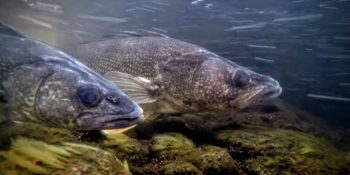Washington, D.C.— July 20, 2019, is the 25th anniversary of the Endangered Species Act listing of the Rio Grande silvery minnow, a small fish found only in the Rio Grande. The federal government is failing in its duties to recover this now-rare fish. The five-year review conducted in 2018—the first such review ever conducted for the minnow—revealed that 14 of the 15 recovery criteria have not been met (the only exception was maintenance of a captive hatchery population).
The minnow was once one of the most common and widespread fish in the Rio Grande Basin. But because of water diversion and habitat fragmentation, the minnow now occupies less than seven percent of its historic range.
“The minnow is the canary in a coalmine for the Rio Grande,” said Galen Hecht, Rio Grande campaigner for WildEarth Guardians. “The health of the minnow indicates the health of the river. And right now it’s not looking good.”
The Rio Grande’s water is regularly drained, mainly for irrigation; some reaches of the river dry completely due to over-allocation of water, killing the resident fish. The “forgotten reach” of the Rio Grande runs from Fort Quitman, Texas to Presidio, Texas, and today has just five percent of its historic annual flow. It is dry much of the year. The forgotten reach was once the heart of the minnow’s habitat that spanned from the Rio Grande Delta at the Gulf of Mexico all the way to Española, New Mexico and included parts of the Pecos River, a tributary of the Rio Grande. Today the minnow exists only in the main stem of Rio Grande from just north of Albuquerque to Elephant Butte Reservoir, just 152 miles of the nearly 3,000 miles where it once thrived.
The minnow has a lifespan of approximately 30 months, and with increasingly frequent drying of the river in the region where the minnow still lives, extinction is a serious threat. Data from recent reports indicate that in 2018, the minnow’s population was just 1.4% of the 25-year average since the species was listed. More strikingly, the minnow’s population decreased 99.5% from 2017-2018.
Guardians’ vision for a living Rio Grande involves rethinking how people use and store water, and will help save the minnow. For example, Elephant Butte and Caballo Reservoirs, low-elevation reservoirs in hot climates, lose a huge amount of surface water to evaporation. Moving water storage upstream to higher-elevation reservoirs could save more than 100,000 acre-feet of water per year (an acre-foot is equivalent to 325,851 gallons and is enough to supply water to a family of four for one year). That water could be used to ensure a living Rio that supports native species who have relied on it for thousands, sometimes millions of years. It will also support communities who depend on the river for tourist and recreational economies such as birding, angling and rafting.
The issue of the Rio Grande drying and dying will only become more urgent as climate change warms the Rio Grande Basin; climate models suggest that before the end of the century the Basin’s mean annual temperature will warm 5° F to 7° F and precipitation will decline. Flows in the Rio may decrease by as much as half. For an already over-taxed river, this scenario means disaster without changes in water management. Therefore, Guardians is working to secure the Rio rights to its own water, ensuring sufficient instream flows to support native species.
“We’re going to need to make some serious changes in order to avoid permanent drought in the Rio Grande Basin,” continued Hecht. “But there’s hope; we can restore the Rio to its former glory and preserve the wildlife and human communities that depend on this imperiled waterway.”
For more information, see Guardians’ report “The Rio Grande: Rethinking Rivers in the 21st Century.” WildEarth Guardians is hosting events around New Mexico to launch the Living Rio Campaign, an initiative to restore the Rio Grande to support thriving communities of people and wildlife. The first events will take place in Santa Fe and Albuquerque and include screenings of Patagonia’s new film “Artifishal,” about the plight of wild fish, and events to kick-off the campaign and get the public involved in the pursuit of a living Rio Grande.
• Thursday, July 25—Artifishal in Santa Fe at the Jean Cocteau Cinema at 7PM, by donation and open to the public
• Saturday, July 27—Santa Fe Living Rio Kick-Off at the Downtown Public Library, 3:00-4:30PM, free and open to the public
• Saturday, August 3—Artifishal in Albuquerque at The Guild Cinema at 1PM, by donation and open to the public
• Tuesday, August 6—Albuquerque Living Rio Kick-Off at Valle de Oro National Wildlife Refuge 5:30-7:00. Free and open to the public.
SPREAD THE NEWS
COMMENT, Like, Follow & SHARE @I70Scout
CURRENT EDITION
WEATHER & TRAFFIC PUZZLES RECENT NEWS ADVERTISE WITH US

Leave a Reply